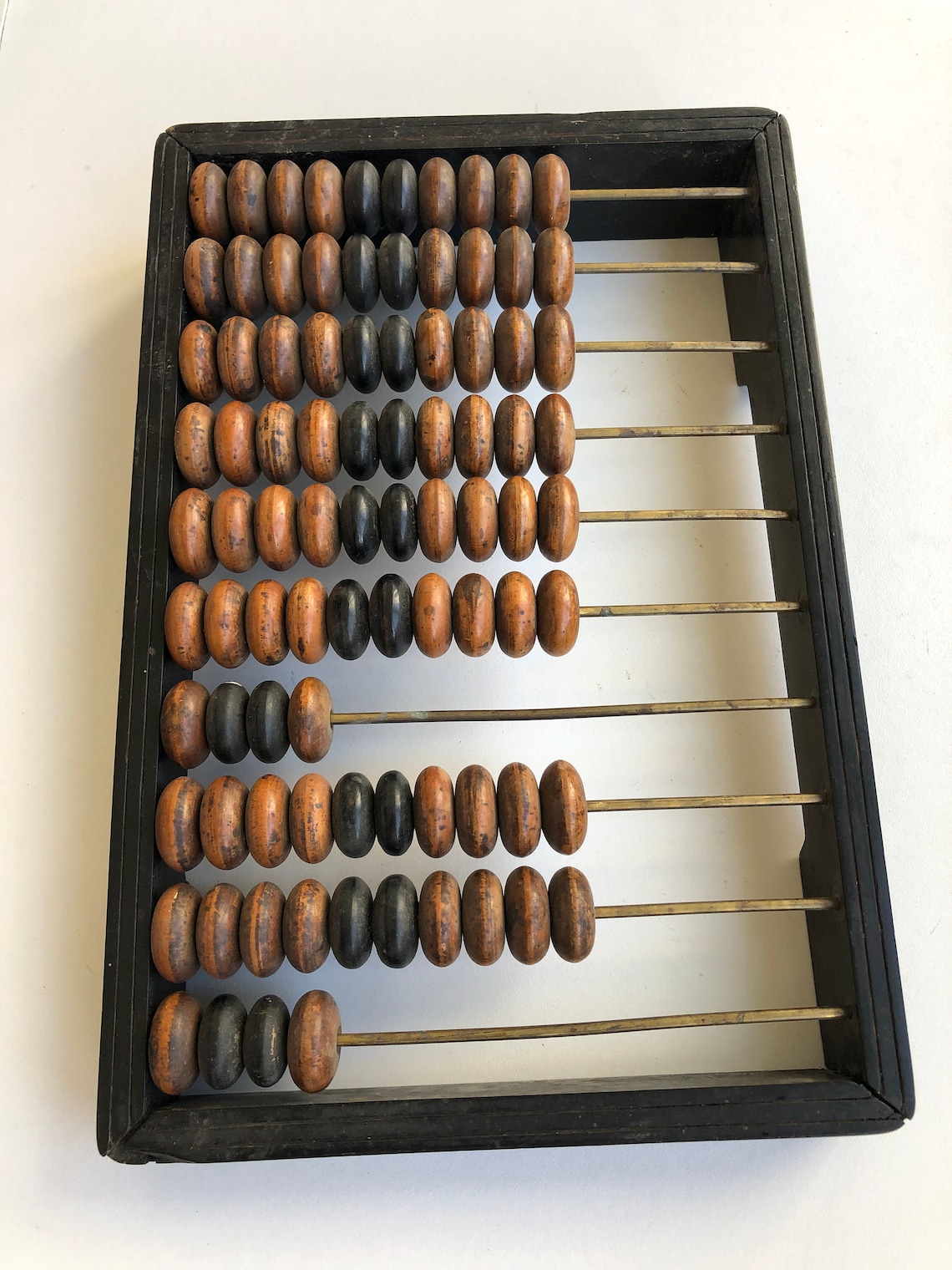
Others may use an abacus due to visual impairment that prevents the use of a calculator. The abacus remains in common use as a scoring system in non- electronic table games. Merchants, traders, and clerks in some parts of Eastern Europe, Russia, China, and Africa use abacuses. The abacus has an advantage of not requiring a writing implement and paper (needed for algorism) or an electric power source. Although calculators and computers are commonly used today instead of abacuses, abacuses remain in everyday use in some countries. In the ancient world, abacuses were a practical calculating tool. The beads are first arranged to represent a number, then are manipulated to perform a mathematical operation with another number, and their final position can be read as the result (or can be used as the starting number for subsequent operations).

1⁄ 2, 1⁄ 4, and 1⁄ 12 in Roman abacus), and a decimal point can be imagined for fixed-point arithmetic.Īny particular abacus design supports multiple methods to perform calculations, including addition, subtraction, multiplication, division, and square and cube roots. Natural numbers are normally used, but some allow simple fractional components (e.g. Roman and East Asian abacuses use a system resembling bi-quinary coded decimal, with a top deck (containing one or two beads) representing fives and a bottom deck (containing four or five beads) representing ones. Later the beads were made to slide on rods and built into a frame, allowing faster manipulation.Įach rod typically represents one digit of a multi-digit number laid out using a positional numeral system such as base ten (though some cultures used different numerical bases). In their earliest designs, the beads could be loose on a flat surface or sliding in grooves. The abacus consists of a two-dimensional array of slidable beads (or similar objects).

The abacus ( PL: abaci or abacuses), also called a counting frame, is a hand-operated calculating tool of unknown origin used since ancient times in the ancient Near East, Europe, China, and Russia, millennia before the adoption of the Hindu-Arabic numeral system. For the medieval book, see Liber Abaci.īi-quinary coded decimal-like abacus representing 1,352,964,708 This means that deliveries are usually twice as fast as with DHL Economy."Abaci" and "Abacuses" redirect here. We ship with DHL Premium instead of DHL Economy. In this instance, the statutory provisions shall apply. If this is not possible or should the customer not agree, the vendor may not render the promised service. In the event of an ordered item not being available, the vendor reserves the right to render a service equivalent in quality and price (goods or service) insofar as this is reasonable for the customer and the latter agrees to the replacement in writing. The costs of transport and packaging are only charged once with part-deliveries.

the delivery of the remaining goods ordered is ensured and this will not cause the customer any substantial extra work or additional costs (unless the vendor is willing to accept these costs).the part-delivery can be used by the customer within the scope of the contractual designated purpose,.Part-deliveries are permissible unless the customer has no discernible interest in them or they would be clearly unreasonable. If there are no details given about the stock or delivery times, the delivery times for goods in stock will apply. You can determine whether or not the goods are available from the text of the offer. With goods not in stock, the delivery time can take up to two weeks from receipt of order. Goods already in stock with the vendor will be shipped – unless otherwise stated in the offer – within two working days after receiving an order. All prices are final prices, which include statutory VAT.


 0 kommentar(er)
0 kommentar(er)
